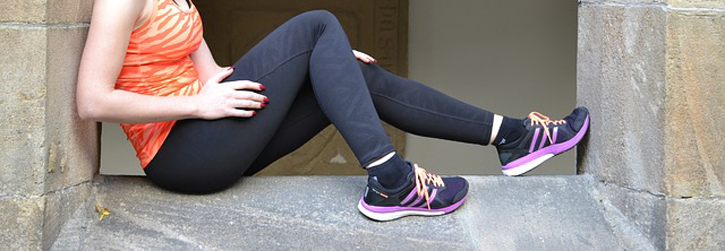in Joints & Muscles, Sports Injury
The Dreaded IT Band

A lot of people out there who know of the IT band, or Iliotibial Tract for correct terminology, more than likely know of its existence because of some sort of lateral knee or hip pain they may have suffered in the past.
The purpose of this blog will be to explain to you what the IT band actually is, its’ purpose and common injuries you may come across.
What is it?
The Iliotibial tract is a thick layer of fascia that sits superficially on the outside of each thigh. It’s easy to find when palpating, and in some cases visible to see. It originates from the gluteal muscle in your buttocks as well as the upper anterior ridge of your pelvis, and inserts at the top of the tibia, or tibial tubercle, just below the outside of your knee joint. The IT band is on the outside of your leg, running from your hip to your knee. The location of the IT band means that it sits directly over the outside of your hip. One hip flexing muscle attaches to the IT band fully at one end known as Tensor Fascia Latae, or as I like to refer the pocket muscle due to its position under your trouser pocket!
What’s its purpose?
The primary purpose of the IT band is to stabilize the hip and knee joint. This means when standing, walking, jumping or any other weight bearing activities through the hip and knee, the IT band will be in play acting as support. With muscles associated with the IT band, it also aids in movements flexion, extension, abduction, and lateral rotation of the hip. This involves such movements as bending, straightening or moving the leg outwards.
With these purposes in further detail, by stabilizing the knee during running or walking it takes some pressure off of the lateral knee ligaments and lower back muscles. If it wasn’t for our IT band, these areas would take almost all the pressure during some exercise activities.
The muscles attached to the IT band to aid in mentioned movements, we have the Gluteus Maximus, (the largest muscle in the buttocks) and tensor fascia latae. The Gluteus Maximus plays a big role in your hip movement so if there is any tightness or pain there, it can not only restrict range of movement but also affect the IT band.
Common Injuries
Well when it comes to the IT band, there is only one injury that may even have a bigger reputation than the tissue itself, which is IT band syndrome.
This injury is very common among runners especially, due to the impact. The IT band sits over the side of the knee, and during knee bending or straightening, or hip flexion/extension it can cause rubbing over the bone in the upper part of the leg, leading to inflammation of the fascia. This is the connective tissue, that form sheets or bands beneath the skin to attach, stabilize, enclose, and separate muscles and other internal organs. Pain on striking the floor with your foot will be sharp, and can then ache after activity. You could also suffer with pain in the hip, directly on top of the greater trochanter (the head of the) femur. Swelling can occur if it becomes too aggravated, however don’t get this confused with what could also be trochanteric bursitis.
The best way to never come across any issues with the IT band if you are primarily a runner is to simply stretch, and keep a good range of movement in your hip. If your range of movement in your hip is very limited before you start regularly running, I would recommend you address that issue first so not to get injured early into your training. Movement is always great to maintain with any activity so do keep that in mind regardless of your choice in exercise.
If you have any further questions or worries please don’t hesitate to contact The Body Matters.
- Using Self-Talk to Boost Self-Confidence - 5th April 2024
- Simple Techniques for Recharging Amid a Hectic Schedule - 28th March 2024
- Letting Go of Material and Emotional Baggage - 12th March 2024
